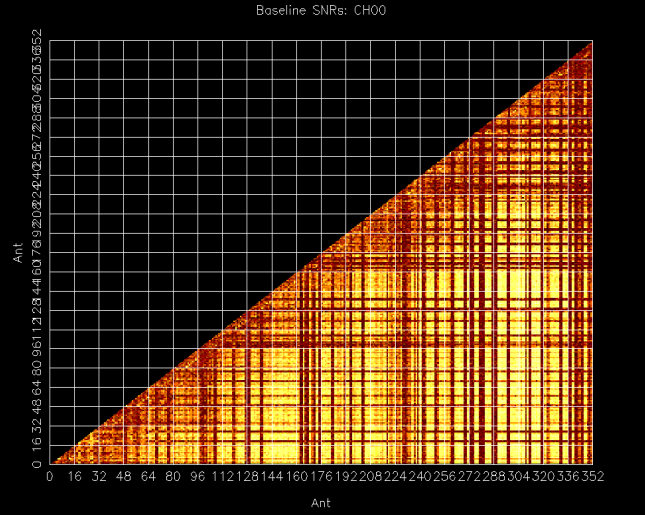The Molonglo telescope is an array of 352 smaller telescopes — arranged in two arms aligned east to west, and stretched over 1.6 km.
Such multi-element telescopes are operated in a special, “interferometric” mode, in which the celestial signals they pick up are carefully aligned by the time of arrival at each point in the array. This has two advantages : firstly, the signal can be added up across the array with much greater fidelity, and secondly, the position on the sky from which the signal came can be determined much more accurately.
Molonglo consists of 352 individual elements, each picking up sky signals, and to add all these together requires careful measurement of the arrival time delays of each element relative to the others. Until recently, UTMOST could only achieve this on a limited subset of elements, because we were not yet using the full capabilities of the supercomputer installed on site in May 2015.
The supercomputer uses GPU technology — or Graphics Processing Units. These devices were developed for the gaming industry, are the fastest compute devices available, and have a wide range of uses outside gaming . UTMOST uses 54 of these inexpensive yet powerful devices to process the high volumes of data coming off the telescope in real time, at less than a tenth of the cost of traditional techniques.
In October 2015, UTMOST member Andrew Jameson implemented the GPU based programs which can handle these high data rates (22 Gbytes/sec) and match signals across the entire 352 element array. Our first “correlation triangle”, which measures the signal strength in every pair of elements in the array is shown above.
Full “xGPU” mode correlation will improve the quality of UTMOSTs mapping, burst search and pulsar timing very significantly.
Congratulations to Andrew Jameson for this great achievement.
